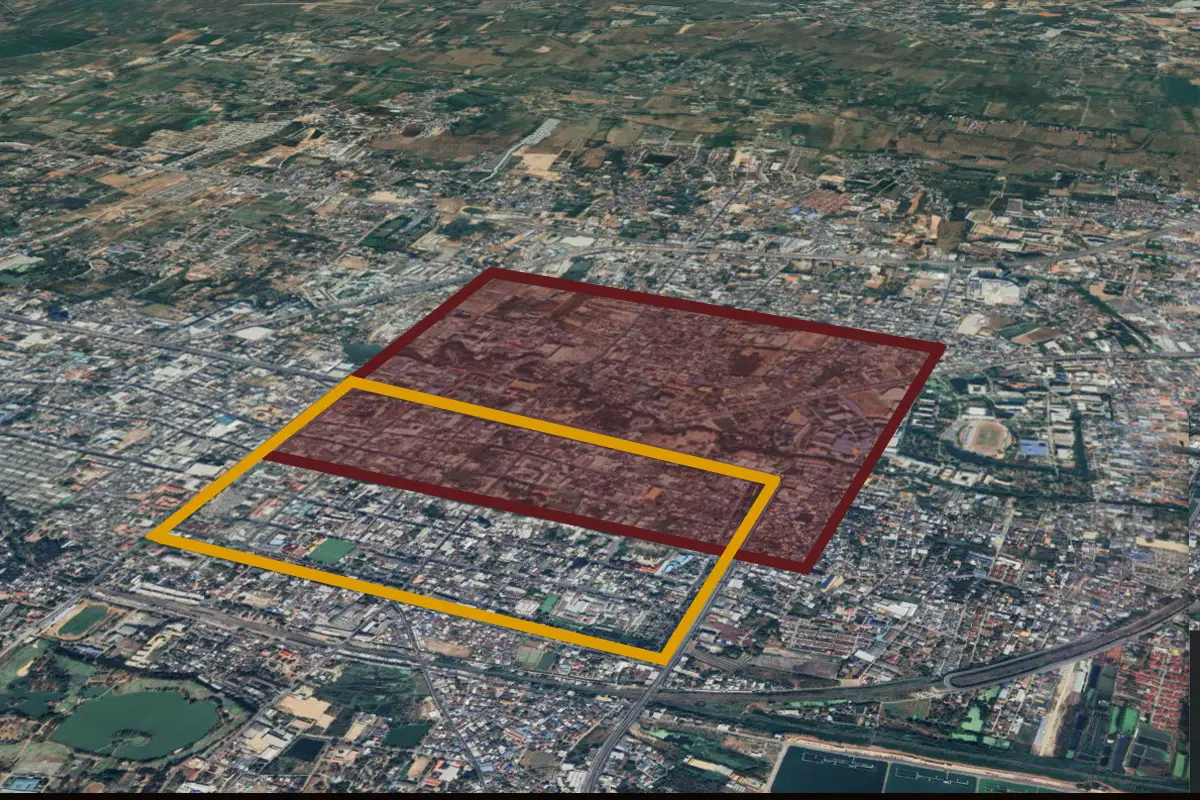A research project led by Prof. Dr. Santi Pailoplee from Chulalongkorn University has discovered the traces of a lost city in the historic centre of Nakhon Ratchasima in Northeastern Thailand.
An analysis of aerial photographs taken in the 1950’s has revealed a linear four-sided earthwork embankment extending north, west, and east of the Takhong Canal.
The embankment also passes beneath the historic centre, indicating that the feature pre-dates the construction of the old city of Nakhon Ratchasima and the Takhong Canal built during the reign of King Narai the Great in the Ayutthaya period.
Archaeologists have interpreted the embankment as the boundary of a lost city, comparable to other 4-sided earthen embankment settlements from the same period.
Covering an estimated 3.4 square kilometres, the area of this earlier city was twice the size of the old city of Nakhon Ratchasima and considerably larger than other earthen embankment settlements.

According to a press statement by Chulalongkorn University, the embankment aligns with Chompol Road, the main highway that passes through the old city of Nakhon Ratchasima from the Chumphon Gate in the west to the Phon Lan Gate in the east.
Prof. Dr. Santi Pailoplee, said: “The original southern embankment may have been repurposed from its original function as a community boundary marker to become the city’s main central road in old Nakhon Ratchasima.”
From this discovery, Prof. Dr. Santi Pailoplee commented that this is only a preliminary study based on remote sensing data, which will require additional archaeological surveys and excavations to verify the accuracy of his interpretation.
Header Image Credit : Chulalongkorn University
Sources : Chulalongkorn University





